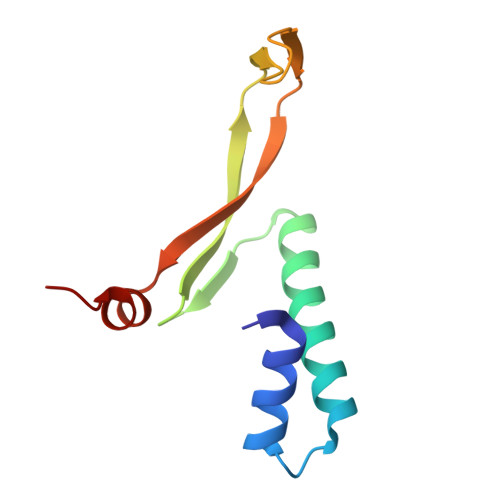Cryo-EM Structure of the relaxosome, a complex essential for bacterial mating and the spread of antibiotic resistance genes.
Williams, S.M., Raffl, S., Kienesberger, S., Ilangovan, A., Zechner, E.L., Waksman, G.(2025) Nat Commun 16: 4906-4906
- PubMed: 40425557
- DOI: https://doi.org/10.1038/s41467-025-60116-6
- Primary Citation of Related Structures:
9F0X, 9F0Y, 9F0Z, 9F10, 9F11, 9F12 - PubMed Abstract:
Bacterial mating, or conjugation, was discovered nearly 80 years ago as a process transferring genes from one bacterial cell (the donor) to another (the recipient). It requires three key multiprotein complexes in the donor cell: a DNA-processing machinery called the relaxosome, a double-membrane spanning type 4 secretion system (T4SS), and an extracellular appendage termed pilus. While the near-atomic resolution structures of the T4SS and pilus are already known, that of the relaxosome has not been reported to date. Here, we describe the cryo-EM structure of the fully assembled relaxosome encoded by the paradigm F plasmid in two different states corresponding to distinct functional steps along the DNA processing reaction. By varying the structures of model DNAs we delineate conformational changes required to initiate conjugation. Mutational studies of the various protein-protein and protein-DNA interaction hubs suggest a complex sensitive to trigger signals, that could arise from cell-to-cell contacts with recipient cells.
- Institute of Structural and Molecular Biology, School of Natural Sciences, Birkbeck College, Malet Street, London, WC1E 7HX, UK. sunanda.williams@bbk.ac.uk.
Organizational Affiliation:






















